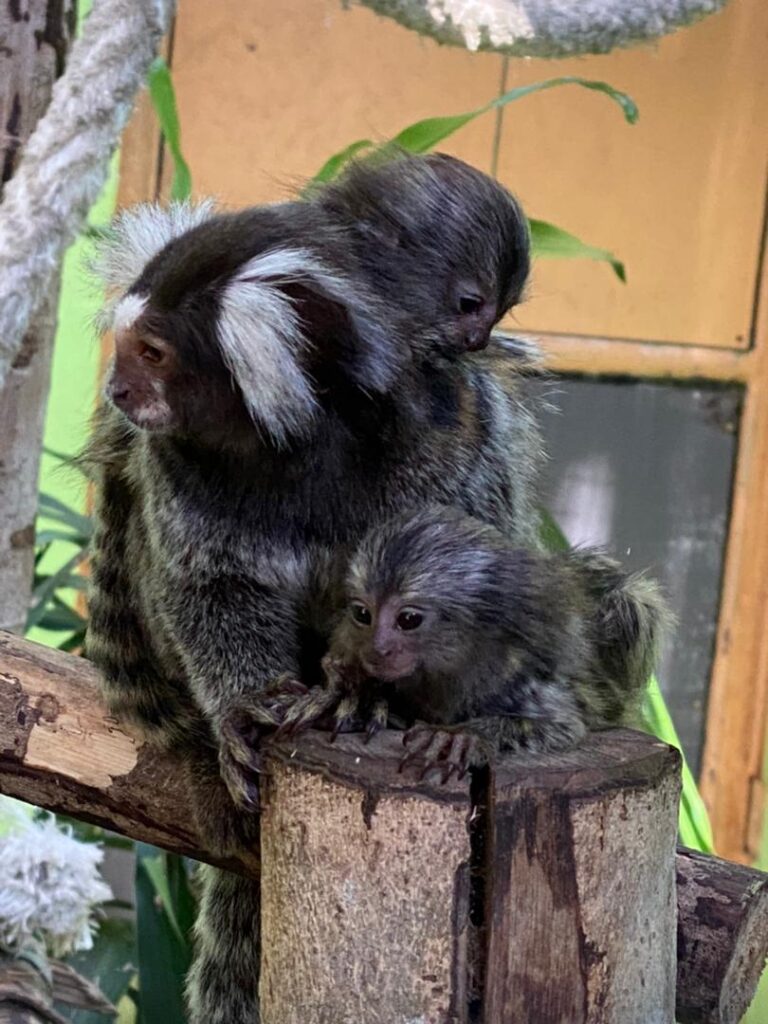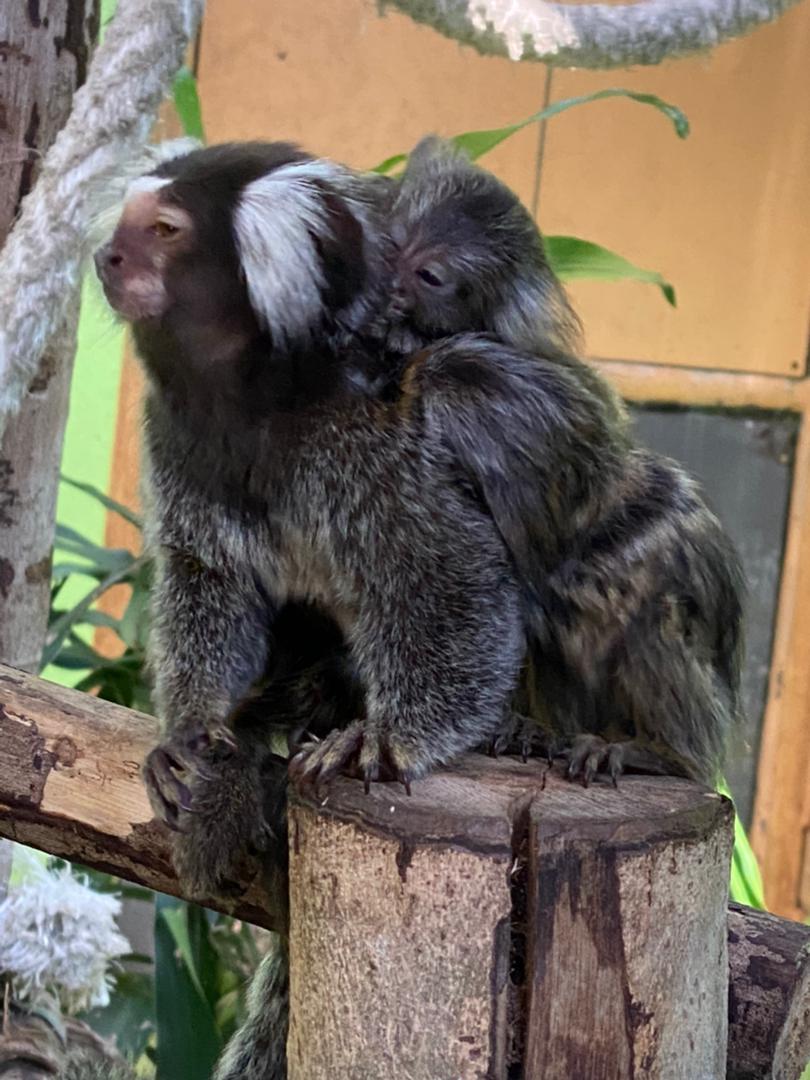
By John Teoh
There are two new arrivals at the Langkawi Wildlife Park, they are the two baby marmosets.
They were born three months ago at the park.
Visitors can now see the babies together their moms in their enclosures.
For those who are not familiar with marmosets, they are native to South America and have been found in Bolivia, Brazil, Colombia, Ecuador, Paraguay and Peru.
They have also been occasionally spotted in Central America and southern Mexico.
Marmosets are sometimes kept as pets, though they have specific dietary and habitat needs which require consideration.
Most marmosets are about 20 centimetres (8 in) long. Relative to other monkeys, they show someone apparently primitive features.
They have claws rather than nails, and tactile hairs on their wrists. They lack wisdom teeth, and their brain layout seems to be relatively primitive. Their body temperature is unusually variable, changing by up to 4 °C (7 °F) in a day.
Marmosets are highly active, living in the upper canopy of forest trees and feeding on insects, fruit, leaves, tack, sap and gum.
They have long lower incisors, which allow them to chew holes in tree trunks and branches to harvest the gum inside; some species are specialised feeders on gum.


